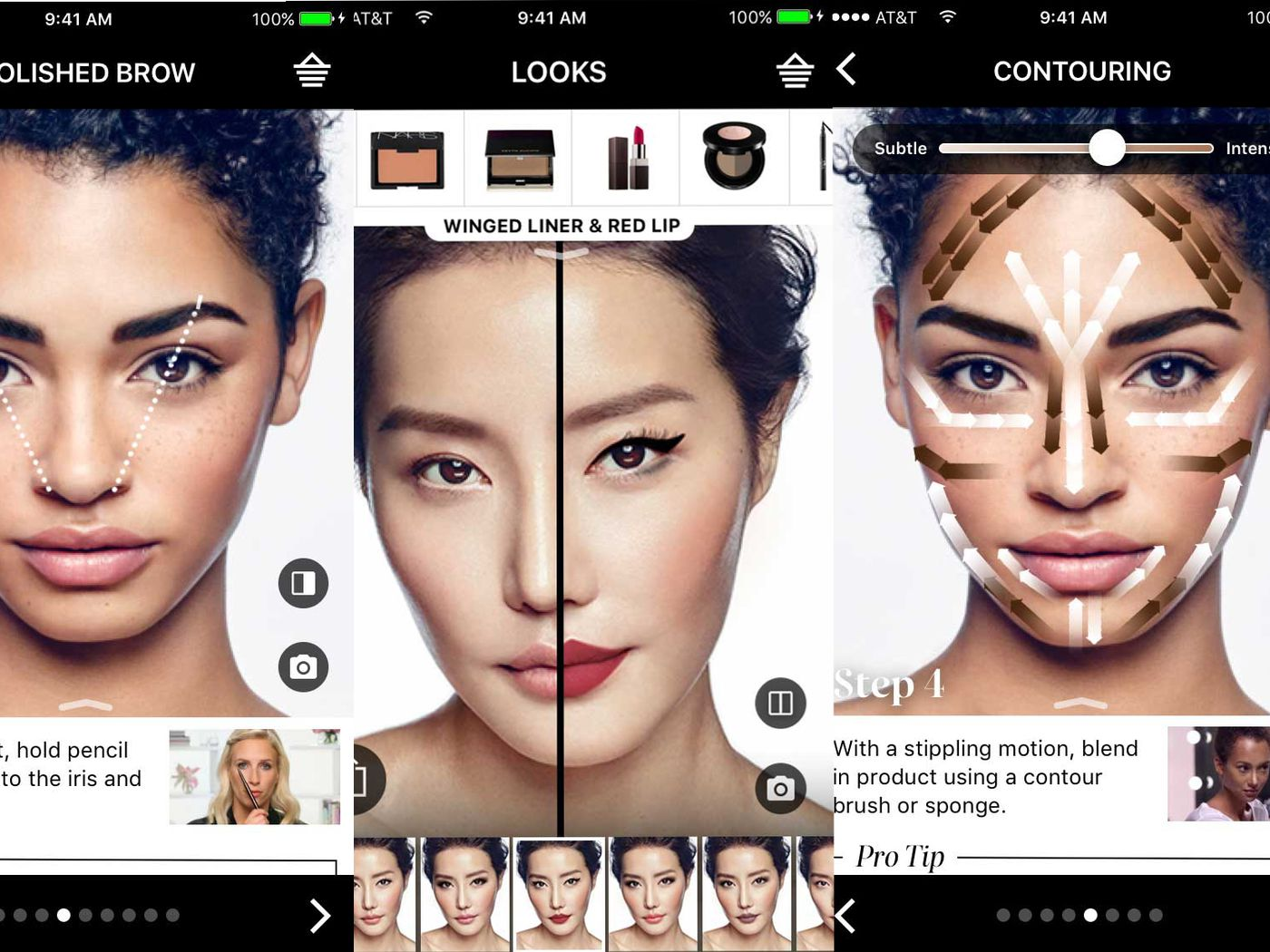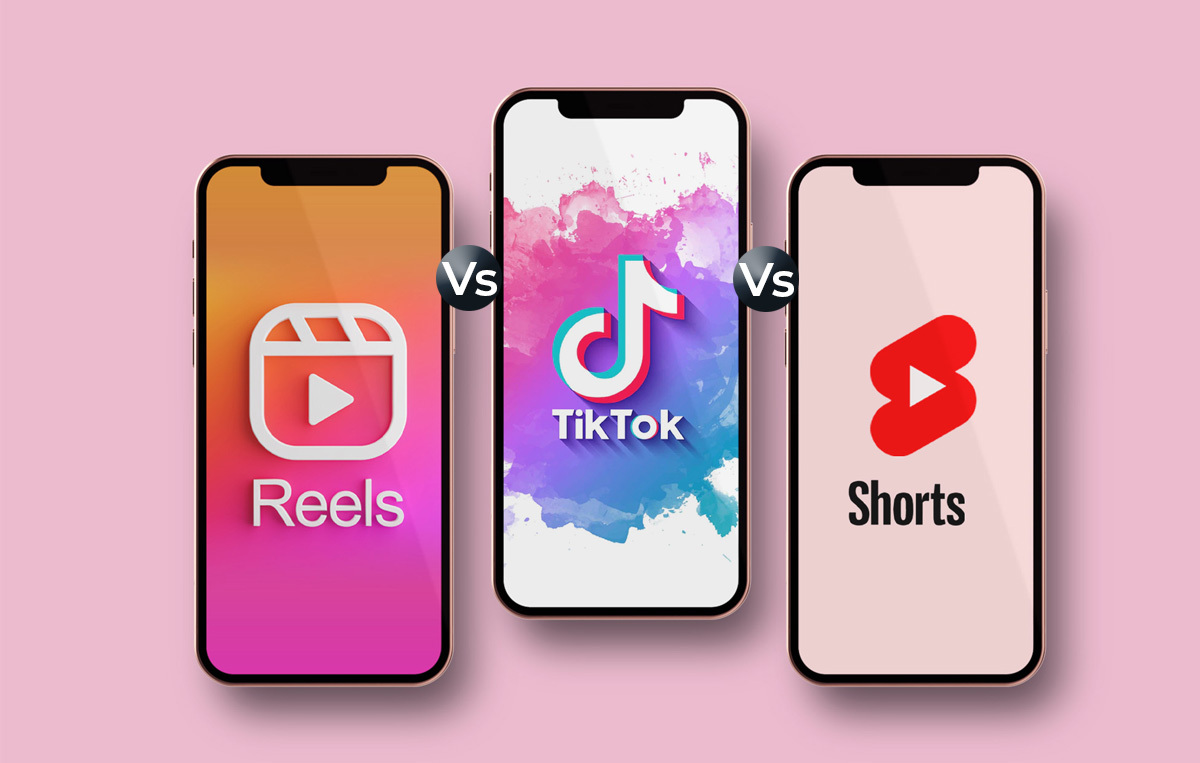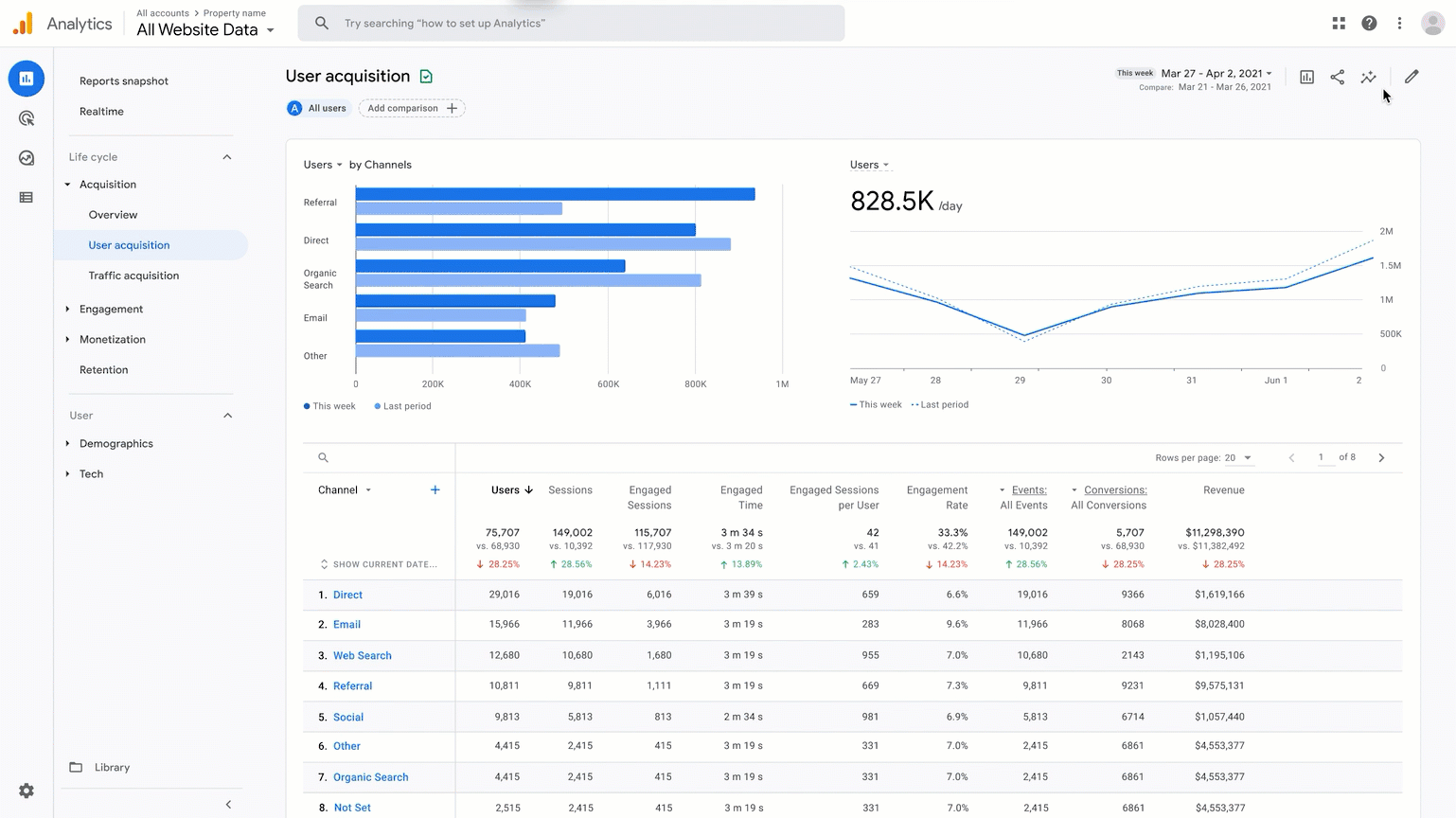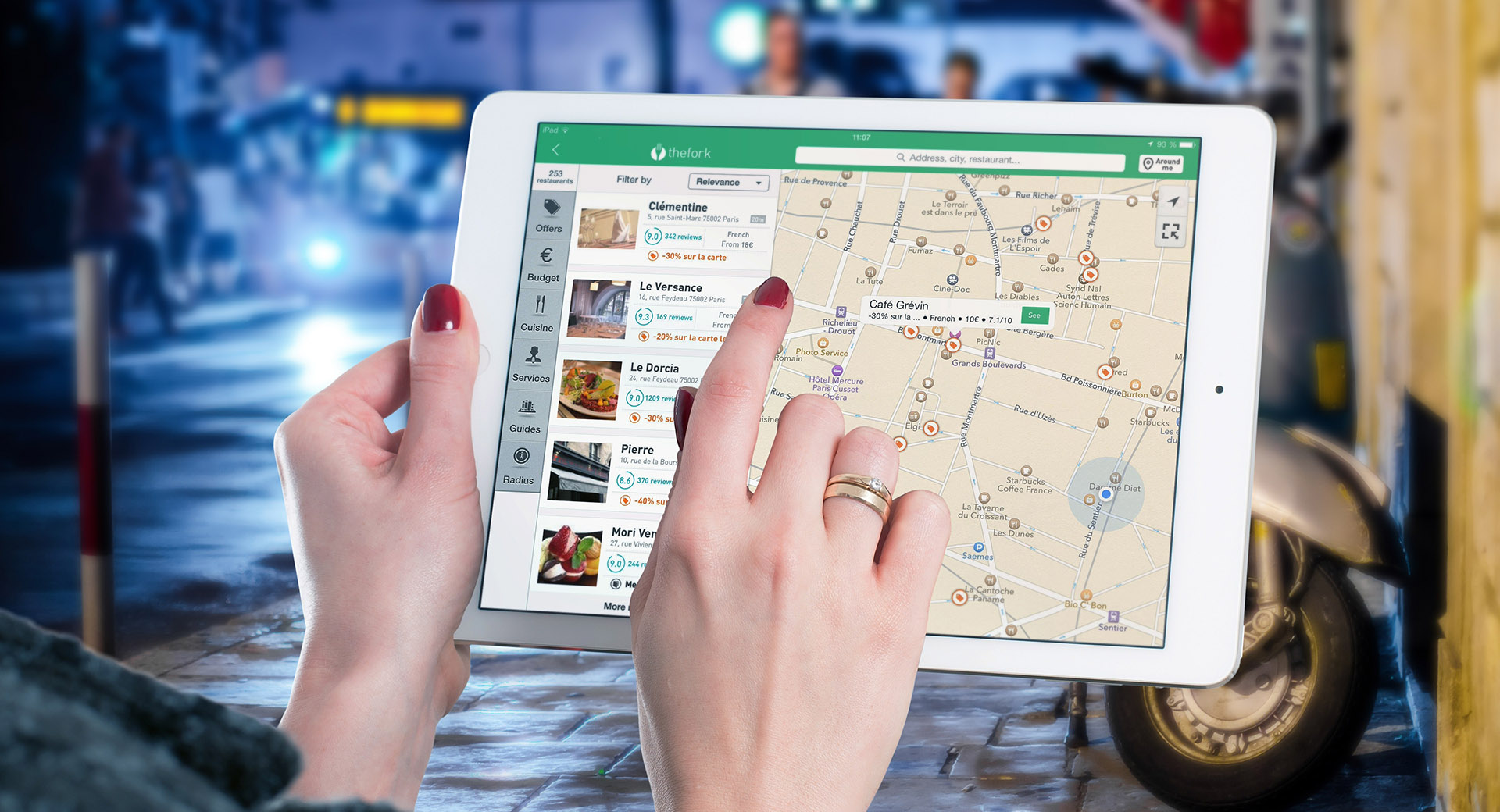The Future of Digital Marketing: Embracing Emerging Technologies
Article Updated on April 6, 2023
The future of digital marketing is an exciting one, with new technologies and trends emerging all the time. Artificial intelligence (AI), virtual reality, and chatbot LLMs are just a few of the technologies that are changing the way businesses reach and engage with customers.
As businesses strive to keep up with the latest trends and stay ahead of the competition, it’s becoming increasingly important to understand the future of digital marketing and how to embrace emerging technologies to reach and engage with customers.
From personalization and artificial intelligence to virtual reality and social commerce, we’ll explore the key trends and strategies that are driving digital marketing forward.
The Basics of Digital Marketing
But before we delve into the exciting world of emerging technologies, let’s start with the basics.
Digital marketing is the use of online and digital media to promote products and services. Businesses leverage digital channels such as search engines, social media, email, and their websites to connect with their target audiences.
There are many benefits to using digital marketing, including:
- Increased reach: Digital marketing allows businesses to reach a global audience quickly and cost-effectively.
- Targeted advertising: Digital marketing allows businesses to target their advertising to specific audiences, based on factors such as demographics, interests, and online behavior.
- Measurable results: Digital marketing campaigns can be tracked and measured, so businesses can see how well they are performing and make necessary adjustments.
Digital marketing has become increasingly important in recent years as consumers have shifted their spending habits online. In fact, e-commerce sales were predicted to be around $5.7 trillion in 2022.
So, let’s explore the exciting world of digital marketing and discover how businesses can leverage emerging technologies to stay ahead of the curve.
The Personalization of Digital Marketing
The personalization of digital marketing has become far more important in recent years, with businesses of all sizes recognizing the importance of tailoring their marketing efforts to individual customers.
As the competition for customers’ attention and loyalty intensifies, providing a personalized experience can be the key differentiator that sets one business apart from another.
Personalization can take many forms, from customized content to tailored product recommendations based on customer behavior. According to a recent study by Epsilon, 80% of customers are more likely to do business with a company that offers personalized experiences.
In the future, digital marketing personalization is likely to become even more sophisticated and tailored to individual customers. With advancements in AI and machine learning, businesses will be able to analyze vast amounts of data to gain a deep understanding of each customer’s preferences, behaviors, and needs. This will allow businesses to create hyper-personalized experiences that are truly unique to each customer.
Additionally, as more and more devices become connected, businesses will have access to even more data points, enabling them to personalize experiences across multiple touchpoints. However, with the increasing concerns around data privacy, businesses will need to find ways to balance personalization with transparency and ethical use of customer data.
AI and the Future of Digital Marketing
There has been a lot of speculation recently that the future of digital marketing will be driven by AI. But let’s address the elephant in the room: will the future of digital marketing mean the end of human jobs?
While AI and automation may change the way we work, it won’t necessarily mean that human marketers will be replaced entirely. In fact, it could mean the opposite. With the advent of AI, human marketers can work alongside intelligent machines to create even more effective campaigns.
Real-world examples of AI in digital marketing include Netflix’s recommendation engine, and Sephora’s virtual artist, which uses AI to enable customers to try on different looks virtually.

Examples such as these show the massive potential of AI in delivering personalized experiences to customers and transforming the way businesses engage with their audience.
For those who are still on the fence about incorporating AI into their marketing stack – think of it this way: would you rather have a team of humans working for hours to gather and analyze your marketing data, or a suite of software that can do it in seconds?
By offloading these tasks to machines, marketers can focus on the more creative aspects of their work – the things that AI typically finds more difficult, like storytelling, human empathy, and creativity.
Exploring the Impact of AR & VR on The Future of Digital Marketing
With the increasing sophistication of VR and AR technologies, digital marketing efforts are set to integrate seamlessly into online, virtual spaces. This presents a wealth of opportunities for businesses to create personalized in-world advertisements, immersive branded experiences, and interactive product demonstrations within VR and AR environments
Early examples of this concept in action include Facebook’s Metaverse, crypto project Decentraland and the concerts and brand tie in experiences seen in Fortnite.
Big brands like IKEA are also getting in on the action, launching VR experiences that allow customers to virtually place furniture in their homes to see how it would look before making a purchase.

AR and VR technologies will continue to shape the future of digital marketing in a variety of ways. For example, retailers may create virtual stores where customers can browse and purchase products in an immersive environment, without leaving their homes.
Additionally, AR technology can be used to enhance in-store experiences, allowing customers to access additional information and product recommendations as they browse the shelves. With the ability to create truly immersive experiences for customers, businesses that embrace these technologies will certainly be at the forefront of the industry.
The Importance of Mobile Optimization
As mobile devices become more integral to people’s lives, the importance of mobile optimization in digital marketing cannot be overstated. In fact, according to Statista, in 2021, mobile devices accounted for over 54% of all internet traffic worldwide, with this number expected to rise in the coming years.
A prime example of a business that has mastered mobile optimization is Amazon. The company’s mobile app is designed to provide a seamless and personalized experience for its users. And if it’s working for Amazon, it’s likely going to work for you too.
One of the most important things to consider with the rise in users accessing the web on mobile is to make sure your website is responsive, meaning that it automatically adjusts to fit the screen size of the device it’s being viewed on. This is essential for ensuring that your website is easy to use and navigate on mobile devices.
Here are some tips for mobile optimization:
- Make sure your website loads quickly on mobile devices.
- Use a responsive design that automatically adjusts to fit the screen size of the device.
- Use large, easy-to-read fonts.
- Keep your text concise and to the point.
- Use images and videos to break up the text.
- Avoid using Flash.
- Make sure your calls to action are clear and easy to see.
- By following these tips, you can make sure that your website and marketing materials are optimized for mobile devices and provide a great user experience
By embracing mobile optimization, businesses can provide a seamless and personalized experience for their users, increase engagement and sales, and stay ahead of the curve in the ever-evolving world of digital marketing.
The Future of Social Media in Digital Marketing
Social media is constantly evolving, and as digital marketing becomes more sophisticated, we can expect to see even more changes in the future.
One social media platform that has been making waves in recent years is TikTok.
With over 1 billion active users, TikTok is rapidly becoming one of the most popular social media platforms. Many businesses are already taking advantage of TikTok’s popularity by creating fun and engaging content that resonates with their target audience.
In congruence with the rise of TikTok, we’ve seen the shortening of attention spans, with other platforms looking to react to the change by launching their own competing short form content delivery platforms.

As features like Instagram Reels and YouTube Shorts have begun to gain traction, businesses will need to adapt their content strategies to meet the demands of their audience.
But social media is not just about creating engaging content. In the future, we can expect to see social media platforms leveraging the power of AI to offer even more targeted advertising options.
With AI, businesses will be able to create hyper-personalized ads that are tailored to the specific needs and interests of individual users. This will not only improve the effectiveness of digital marketing campaigns but also improve the user experience by delivering content that is truly relevant to them.
As social media continues to evolve, businesses will need to stay ahead of the curve and adapt their strategies to meet the changing needs of their audience.
The Future of Marketing Data Analytics
Data analytics is a crucial aspect of digital marketing that has gained immense significance in recent years.
With the increasing importance of data-driven insights, the tools and techniques used for data analytics are evolving rapidly. In this section, we will explore some of the latest trends and technologies that are shaping the future of data analytics in digital marketing.
One of the most significant changes in the field of data analytics is the shift towards more advanced analytics tools. Google Analytics 4, for example, is a new analytics platform that provides more sophisticated insights into customer behavior.

It is designed to provide a more comprehensive view of the customer journey, with features like cross-device tracking and real-time reporting. The platform also uses machine learning to generate insights automatically, making it easier for marketers to identify trends and patterns.
Another tool that is gaining popularity in data analytics is DataStudio, a free data visualization and reporting platform from Google, that allows users to create customizable reports and dashboards, making it easier to analyze and present data in a visually appealing way.
As data sets grow larger and more complex, businesses are also turning to more advanced technologies like Tableau as well as Big Data tools like Apache Hadoop, Spark, and NoSQL.
But with the rise of advanced analytics tools and Big Data comes a new set of challenges in the form of managing larger data sets than ever before and as AI begins to help more businesses analyze larger amounts of data than ever before, a set of robust solutions will be required to deal with the vast quantities of data processing and storage.
Exploring the Future of Brand Storytelling
Another potential trend is the use of interactive storytelling, where customers can participate in the brand narrative in real-time. This could take many forms, from choose-your-own-adventure style experiences, like the KFC Dating Simulator, to real-time voting or polling. By involving customers in the brand story, businesses can create a deeper sense of engagement and loyalty.

A real-world example of successful brand storytelling is Patagonia. The outdoor apparel company has built its brand around its commitment to environmental sustainability, and its storytelling efforts have resonated with consumers.
Patagonia’s “Don’t Buy This Jacket” campaign, which urged customers to buy only what they need and repair their clothes instead of buying new ones, was a powerful example of brand storytelling that aligned with the company’s values.

No matter what happens down the line, ultimately, the future of brand storytelling will be about creating more immersive, engaging, and authentic experiences for customers.
By tapping into the power of emotion and storytelling, businesses can create stronger connections with their customers and stand out in a crowded marketplace.
The Role of Gamification in The Future of Digital Marketing
Gamification has been an increasingly popular trend in digital marketing, with businesses using game mechanics to create a more engaging and interactive experience for their customers.
However, the future of gamification is not limited to just points, badges, and leaderboards. New technologies and trends are shaping the future of gamification, such as NFTs, collectibles, and reward point apps.
Some wonder why do people chase the hype around gamified collectibles, NFTs and other digital assets, but to others they represent ownership of a unique digital item in the online space. They have become increasingly popular in the world of gaming and collectibles, with some companies using NFTs as a way to gamify their marketing efforts.

In March 2021, Taco Bell released a series of NFTs featuring taco-themed digital artwork, with each NFT serving as a “Golden Ticket” to win free tacos for a year. This campaign not only generated buzz and engagement but also allowed Taco Bell to tap into the growing trend of NFTs.
These products not only create a sense of exclusivity and urgency but also tap into the psychology of motivation by offering a sense of achievement and progress to customers who collect them.
As gamification continues to evolve, businesses need to be aware of these new technologies and trends to stay competitive in the digital marketing landscape.
The key to successful gamification is understanding the psychology of motivation and using it to create a sense of achievement and progress for customers.
By tapping into this psychology and utilizing new technologies, businesses can create more engaging and effective marketing campaigns.
Predictions on the future of digital marketing
The future of digital marketing is full of exciting possibilities. With the rapid advancement of technology, marketers are constantly finding new ways to reach and engage their target audiences.
Here are some thought-provoking speculations on the future of digital marketing over the next ten years:
- Emotion-driven AI marketing: With advancements in AI and machine learning, digital marketing campaigns will be able to read and analyze consumers’ emotions and reactions to different stimuli. This will allow marketers to create highly personalized and emotionally engaging campaigns, tailoring their messaging based on each individual’s emotional state. For example, a company could use AI to identify when a customer is feeling frustrated or stressed, and then tailor their marketing messages to offer support or reassurance.
- Marketing through digital assistants: With the growing reliance on digital assistants like Siri, Alexa, and Google Assistant, marketers may begin to develop campaigns that target users through these devices. This could involve partnering with companies that develop digital assistants to promote products or services, leveraging the user’s trust in their chosen assistant to influence purchasing decisions. For example, a company could create a digital assistant that helps users find and purchase products that match their personal preferences.
- Brain-computer interfaces (BCIs): As BCIs become more common, marketing efforts may directly tap into the human brain, allowing marketers to gauge reactions and preferences in real-time. This could revolutionize how products and services are promoted, as marketers would be able to adjust campaigns instantaneously to appeal to individual consumers on a neurological level. For example, a company could use a BCI to track a customer’s brain activity while they are browsing their website, and then use that information to personalize the content that they see.
- Quantum computing for data analysis: As quantum computers become more accessible, they will be employed to process and analyze vast amounts of marketing data. This will enable marketers to identify trends and patterns that were previously hidden, ultimately allowing for more targeted and effective campaigns. For example, a company could use quantum computing to identify which marketing campaigns are most likely to convert leads into customers.
- Decentralized marketing ecosystems: With the rise of decentralized technologies like blockchain, digital marketing may become more transparent and secure. This could lead to new marketing platforms that enable users to control their own data and set their own preferences, creating a more equitable and ethical digital marketing landscape. For example, a company could use a blockchain-based platform to allow users to track and manage their own data, and to opt out of certain types of marketing.
- Genetically targeted marketing: As the field of genomics advances, it may become possible to use genetic data to create highly personalized marketing campaigns. By understanding the underlying genetic factors that influence a person’s preferences and behaviors, marketers could create campaigns that resonate on a deeply individual level. For example, a company could use genetic data to identify people who are more likely to be interested in certain products or services.
- Environmental and ethical marketing: As concerns about climate change and social issues grow, digital marketing campaigns will increasingly focus on promoting sustainable and ethical products and services. This will lead to a rise in eco-conscious marketing practices, utilizing strategies that emphasize a company’s commitment to environmental and social responsibility. For example, a company could launch a campaign that highlights its use of sustainable materials in its products.
- Integration of marketing with smart cities: As urban areas become more connected and data-driven, digital marketing efforts will be integrated into the fabric of smart cities. This could involve using real-time data to deliver contextually relevant advertisements, promotions, and experiences that are tailored to an individual’s location, activities, and preferences. For example, a company could use data from a smart city to target ads to people who are walking near its store.
- Post-privacy era marketing: With the erosion of privacy in the digital age, marketers may embrace a future in which personal data is freely available and shared. This could lead to a new paradigm in digital marketing, where campaigns are designed to cater to consumers’ most intimate desires and preferences, creating an almost hyper-personalized marketing landscape.
Conclusion
As we’ve seen throughout this article, the future of digital marketing is full of exciting and dynamic changes.
From the rise of AI and automation to the increasing importance of personalization and brand storytelling, businesses that want to stay ahead of the game will need to embrace these emerging technologies.
Here are some key takeaways from the article:
- The rise of AI and automation will change the way businesses operate and market their products and services.
- Personalization and brand storytelling will become increasingly important as businesses look for ways to connect with their customers on a deeper level.
- The digital landscape is constantly shifting, and businesses will need to be agile and responsive to change in order to stay ahead of the curve.
While some of these changes may seem daunting, they also present a tremendous opportunity for businesses to connect with their customers in new and innovative ways.
By leveraging the power of data analytics, AI, gamification, and other emerging technologies, businesses can create personalized, engaging, and memorable experiences for their customers.
So, as we look to the future of digital marketing, let’s embrace these changes and look forward to what’s next. Let’s continue to experiment, learn, and grow, and let’s work together to create a digital landscape that’s engaging, personalized, and exciting for everyone involved.
Comments
The Future of Digital Marketing: Embracing Emerging Technologies
Article Updated on April 6, 2023

The future of digital marketing is an exciting one, with new technologies and trends emerging all the time. Artificial intelligence (AI), virtual reality, and chatbot LLMs are just a few of the technologies that are changing the way businesses reach and engage with customers.
As businesses strive to keep up with the latest trends and stay ahead of the competition, it’s becoming increasingly important to understand the future of digital marketing and how to embrace emerging technologies to reach and engage with customers.
From personalization and artificial intelligence to virtual reality and social commerce, we’ll explore the key trends and strategies that are driving digital marketing forward.
The Basics of Digital Marketing
But before we delve into the exciting world of emerging technologies, let’s start with the basics.
Digital marketing is the use of online and digital media to promote products and services. Businesses leverage digital channels such as search engines, social media, email, and their websites to connect with their target audiences.
There are many benefits to using digital marketing, including:
- Increased reach: Digital marketing allows businesses to reach a global audience quickly and cost-effectively.
- Targeted advertising: Digital marketing allows businesses to target their advertising to specific audiences, based on factors such as demographics, interests, and online behavior.
- Measurable results: Digital marketing campaigns can be tracked and measured, so businesses can see how well they are performing and make necessary adjustments.
Digital marketing has become increasingly important in recent years as consumers have shifted their spending habits online. In fact, e-commerce sales were predicted to be around $5.7 trillion in 2022.
So, let’s explore the exciting world of digital marketing and discover how businesses can leverage emerging technologies to stay ahead of the curve.
The Personalization of Digital Marketing
The personalization of digital marketing has become far more important in recent years, with businesses of all sizes recognizing the importance of tailoring their marketing efforts to individual customers.
As the competition for customers’ attention and loyalty intensifies, providing a personalized experience can be the key differentiator that sets one business apart from another.
Personalization can take many forms, from customized content to tailored product recommendations based on customer behavior. According to a recent study by Epsilon, 80% of customers are more likely to do business with a company that offers personalized experiences.
In the future, digital marketing personalization is likely to become even more sophisticated and tailored to individual customers. With advancements in AI and machine learning, businesses will be able to analyze vast amounts of data to gain a deep understanding of each customer’s preferences, behaviors, and needs. This will allow businesses to create hyper-personalized experiences that are truly unique to each customer.
Additionally, as more and more devices become connected, businesses will have access to even more data points, enabling them to personalize experiences across multiple touchpoints. However, with the increasing concerns around data privacy, businesses will need to find ways to balance personalization with transparency and ethical use of customer data.
AI and the Future of Digital Marketing
There has been a lot of speculation recently that the future of digital marketing will be driven by AI. But let’s address the elephant in the room: will the future of digital marketing mean the end of human jobs?
While AI and automation may change the way we work, it won’t necessarily mean that human marketers will be replaced entirely. In fact, it could mean the opposite. With the advent of AI, human marketers can work alongside intelligent machines to create even more effective campaigns.
Real-world examples of AI in digital marketing include Netflix’s recommendation engine, and Sephora’s virtual artist, which uses AI to enable customers to try on different looks virtually.

Examples such as these show the massive potential of AI in delivering personalized experiences to customers and transforming the way businesses engage with their audience.
For those who are still on the fence about incorporating AI into their marketing stack – think of it this way: would you rather have a team of humans working for hours to gather and analyze your marketing data, or a suite of software that can do it in seconds?
By offloading these tasks to machines, marketers can focus on the more creative aspects of their work – the things that AI typically finds more difficult, like storytelling, human empathy, and creativity.
Exploring the Impact of AR & VR on The Future of Digital Marketing
With the increasing sophistication of VR and AR technologies, digital marketing efforts are set to integrate seamlessly into online, virtual spaces. This presents a wealth of opportunities for businesses to create personalized in-world advertisements, immersive branded experiences, and interactive product demonstrations within VR and AR environments
Early examples of this concept in action include Facebook’s Metaverse, crypto project Decentraland and the concerts and brand tie in experiences seen in Fortnite.
Big brands like IKEA are also getting in on the action, launching VR experiences that allow customers to virtually place furniture in their homes to see how it would look before making a purchase.

AR and VR technologies will continue to shape the future of digital marketing in a variety of ways. For example, retailers may create virtual stores where customers can browse and purchase products in an immersive environment, without leaving their homes.
Additionally, AR technology can be used to enhance in-store experiences, allowing customers to access additional information and product recommendations as they browse the shelves. With the ability to create truly immersive experiences for customers, businesses that embrace these technologies will certainly be at the forefront of the industry.
The Importance of Mobile Optimization
As mobile devices become more integral to people’s lives, the importance of mobile optimization in digital marketing cannot be overstated. In fact, according to Statista, in 2021, mobile devices accounted for over 54% of all internet traffic worldwide, with this number expected to rise in the coming years.
A prime example of a business that has mastered mobile optimization is Amazon. The company’s mobile app is designed to provide a seamless and personalized experience for its users. And if it’s working for Amazon, it’s likely going to work for you too.
One of the most important things to consider with the rise in users accessing the web on mobile is to make sure your website is responsive, meaning that it automatically adjusts to fit the screen size of the device it’s being viewed on. This is essential for ensuring that your website is easy to use and navigate on mobile devices.
Here are some tips for mobile optimization:
- Make sure your website loads quickly on mobile devices.
- Use a responsive design that automatically adjusts to fit the screen size of the device.
- Use large, easy-to-read fonts.
- Keep your text concise and to the point.
- Use images and videos to break up the text.
- Avoid using Flash.
- Make sure your calls to action are clear and easy to see.
- By following these tips, you can make sure that your website and marketing materials are optimized for mobile devices and provide a great user experience
By embracing mobile optimization, businesses can provide a seamless and personalized experience for their users, increase engagement and sales, and stay ahead of the curve in the ever-evolving world of digital marketing.
The Future of Social Media in Digital Marketing
Social media is constantly evolving, and as digital marketing becomes more sophisticated, we can expect to see even more changes in the future.
One social media platform that has been making waves in recent years is TikTok.
With over 1 billion active users, TikTok is rapidly becoming one of the most popular social media platforms. Many businesses are already taking advantage of TikTok’s popularity by creating fun and engaging content that resonates with their target audience.
In congruence with the rise of TikTok, we’ve seen the shortening of attention spans, with other platforms looking to react to the change by launching their own competing short form content delivery platforms.

As features like Instagram Reels and YouTube Shorts have begun to gain traction, businesses will need to adapt their content strategies to meet the demands of their audience.
But social media is not just about creating engaging content. In the future, we can expect to see social media platforms leveraging the power of AI to offer even more targeted advertising options.
With AI, businesses will be able to create hyper-personalized ads that are tailored to the specific needs and interests of individual users. This will not only improve the effectiveness of digital marketing campaigns but also improve the user experience by delivering content that is truly relevant to them.
As social media continues to evolve, businesses will need to stay ahead of the curve and adapt their strategies to meet the changing needs of their audience.
The Future of Marketing Data Analytics
Data analytics is a crucial aspect of digital marketing that has gained immense significance in recent years.
With the increasing importance of data-driven insights, the tools and techniques used for data analytics are evolving rapidly. In this section, we will explore some of the latest trends and technologies that are shaping the future of data analytics in digital marketing.
One of the most significant changes in the field of data analytics is the shift towards more advanced analytics tools. Google Analytics 4, for example, is a new analytics platform that provides more sophisticated insights into customer behavior.

It is designed to provide a more comprehensive view of the customer journey, with features like cross-device tracking and real-time reporting. The platform also uses machine learning to generate insights automatically, making it easier for marketers to identify trends and patterns.
Another tool that is gaining popularity in data analytics is DataStudio, a free data visualization and reporting platform from Google, that allows users to create customizable reports and dashboards, making it easier to analyze and present data in a visually appealing way.
As data sets grow larger and more complex, businesses are also turning to more advanced technologies like Tableau as well as Big Data tools like Apache Hadoop, Spark, and NoSQL.
But with the rise of advanced analytics tools and Big Data comes a new set of challenges in the form of managing larger data sets than ever before and as AI begins to help more businesses analyze larger amounts of data than ever before, a set of robust solutions will be required to deal with the vast quantities of data processing and storage.
Exploring the Future of Brand Storytelling
Another potential trend is the use of interactive storytelling, where customers can participate in the brand narrative in real-time. This could take many forms, from choose-your-own-adventure style experiences, like the KFC Dating Simulator, to real-time voting or polling. By involving customers in the brand story, businesses can create a deeper sense of engagement and loyalty.

A real-world example of successful brand storytelling is Patagonia. The outdoor apparel company has built its brand around its commitment to environmental sustainability, and its storytelling efforts have resonated with consumers.
Patagonia’s “Don’t Buy This Jacket” campaign, which urged customers to buy only what they need and repair their clothes instead of buying new ones, was a powerful example of brand storytelling that aligned with the company’s values.

No matter what happens down the line, ultimately, the future of brand storytelling will be about creating more immersive, engaging, and authentic experiences for customers.
By tapping into the power of emotion and storytelling, businesses can create stronger connections with their customers and stand out in a crowded marketplace.
The Role of Gamification in The Future of Digital Marketing
Gamification has been an increasingly popular trend in digital marketing, with businesses using game mechanics to create a more engaging and interactive experience for their customers.
However, the future of gamification is not limited to just points, badges, and leaderboards. New technologies and trends are shaping the future of gamification, such as NFTs, collectibles, and reward point apps.
Some wonder why do people chase the hype around gamified collectibles, NFTs and other digital assets, but to others they represent ownership of a unique digital item in the online space. They have become increasingly popular in the world of gaming and collectibles, with some companies using NFTs as a way to gamify their marketing efforts.

In March 2021, Taco Bell released a series of NFTs featuring taco-themed digital artwork, with each NFT serving as a “Golden Ticket” to win free tacos for a year. This campaign not only generated buzz and engagement but also allowed Taco Bell to tap into the growing trend of NFTs.
These products not only create a sense of exclusivity and urgency but also tap into the psychology of motivation by offering a sense of achievement and progress to customers who collect them.
As gamification continues to evolve, businesses need to be aware of these new technologies and trends to stay competitive in the digital marketing landscape.
The key to successful gamification is understanding the psychology of motivation and using it to create a sense of achievement and progress for customers.
By tapping into this psychology and utilizing new technologies, businesses can create more engaging and effective marketing campaigns.
Predictions on the future of digital marketing
The future of digital marketing is full of exciting possibilities. With the rapid advancement of technology, marketers are constantly finding new ways to reach and engage their target audiences.
Here are some thought-provoking speculations on the future of digital marketing over the next ten years:
- Emotion-driven AI marketing: With advancements in AI and machine learning, digital marketing campaigns will be able to read and analyze consumers’ emotions and reactions to different stimuli. This will allow marketers to create highly personalized and emotionally engaging campaigns, tailoring their messaging based on each individual’s emotional state. For example, a company could use AI to identify when a customer is feeling frustrated or stressed, and then tailor their marketing messages to offer support or reassurance.
- Marketing through digital assistants: With the growing reliance on digital assistants like Siri, Alexa, and Google Assistant, marketers may begin to develop campaigns that target users through these devices. This could involve partnering with companies that develop digital assistants to promote products or services, leveraging the user’s trust in their chosen assistant to influence purchasing decisions. For example, a company could create a digital assistant that helps users find and purchase products that match their personal preferences.
- Brain-computer interfaces (BCIs): As BCIs become more common, marketing efforts may directly tap into the human brain, allowing marketers to gauge reactions and preferences in real-time. This could revolutionize how products and services are promoted, as marketers would be able to adjust campaigns instantaneously to appeal to individual consumers on a neurological level. For example, a company could use a BCI to track a customer’s brain activity while they are browsing their website, and then use that information to personalize the content that they see.
- Quantum computing for data analysis: As quantum computers become more accessible, they will be employed to process and analyze vast amounts of marketing data. This will enable marketers to identify trends and patterns that were previously hidden, ultimately allowing for more targeted and effective campaigns. For example, a company could use quantum computing to identify which marketing campaigns are most likely to convert leads into customers.
- Decentralized marketing ecosystems: With the rise of decentralized technologies like blockchain, digital marketing may become more transparent and secure. This could lead to new marketing platforms that enable users to control their own data and set their own preferences, creating a more equitable and ethical digital marketing landscape. For example, a company could use a blockchain-based platform to allow users to track and manage their own data, and to opt out of certain types of marketing.
- Genetically targeted marketing: As the field of genomics advances, it may become possible to use genetic data to create highly personalized marketing campaigns. By understanding the underlying genetic factors that influence a person’s preferences and behaviors, marketers could create campaigns that resonate on a deeply individual level. For example, a company could use genetic data to identify people who are more likely to be interested in certain products or services.
- Environmental and ethical marketing: As concerns about climate change and social issues grow, digital marketing campaigns will increasingly focus on promoting sustainable and ethical products and services. This will lead to a rise in eco-conscious marketing practices, utilizing strategies that emphasize a company’s commitment to environmental and social responsibility. For example, a company could launch a campaign that highlights its use of sustainable materials in its products.
- Integration of marketing with smart cities: As urban areas become more connected and data-driven, digital marketing efforts will be integrated into the fabric of smart cities. This could involve using real-time data to deliver contextually relevant advertisements, promotions, and experiences that are tailored to an individual’s location, activities, and preferences. For example, a company could use data from a smart city to target ads to people who are walking near its store.
- Post-privacy era marketing: With the erosion of privacy in the digital age, marketers may embrace a future in which personal data is freely available and shared. This could lead to a new paradigm in digital marketing, where campaigns are designed to cater to consumers’ most intimate desires and preferences, creating an almost hyper-personalized marketing landscape.
Conclusion
As we’ve seen throughout this article, the future of digital marketing is full of exciting and dynamic changes.
From the rise of AI and automation to the increasing importance of personalization and brand storytelling, businesses that want to stay ahead of the game will need to embrace these emerging technologies.
Here are some key takeaways from the article:
- The rise of AI and automation will change the way businesses operate and market their products and services.
- Personalization and brand storytelling will become increasingly important as businesses look for ways to connect with their customers on a deeper level.
- The digital landscape is constantly shifting, and businesses will need to be agile and responsive to change in order to stay ahead of the curve.
While some of these changes may seem daunting, they also present a tremendous opportunity for businesses to connect with their customers in new and innovative ways.
By leveraging the power of data analytics, AI, gamification, and other emerging technologies, businesses can create personalized, engaging, and memorable experiences for their customers.
So, as we look to the future of digital marketing, let’s embrace these changes and look forward to what’s next. Let’s continue to experiment, learn, and grow, and let’s work together to create a digital landscape that’s engaging, personalized, and exciting for everyone involved.






